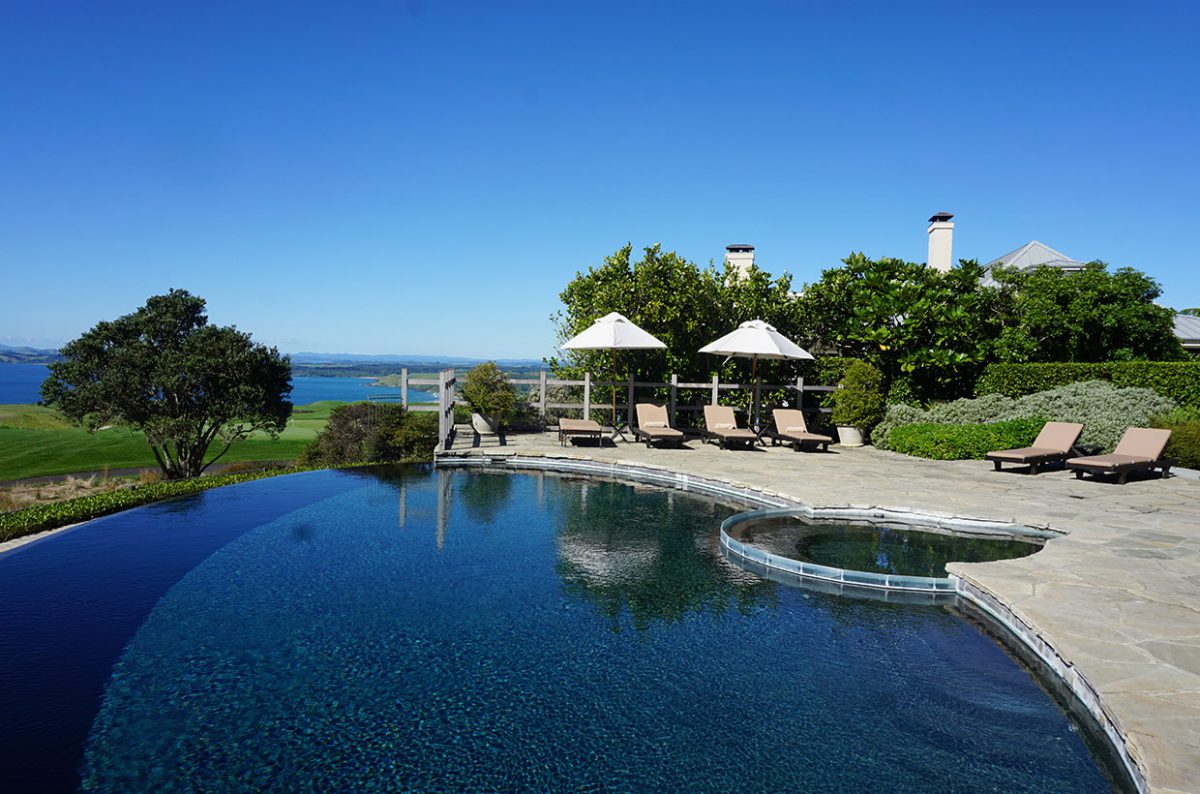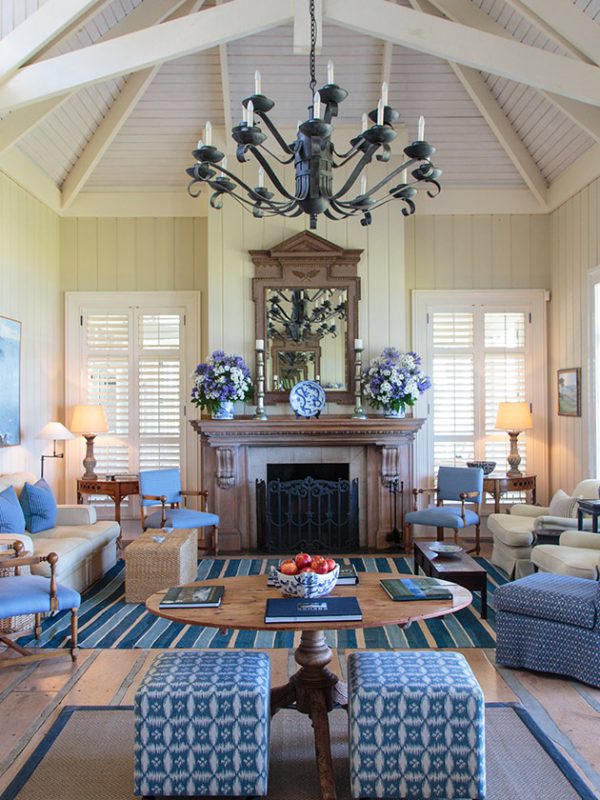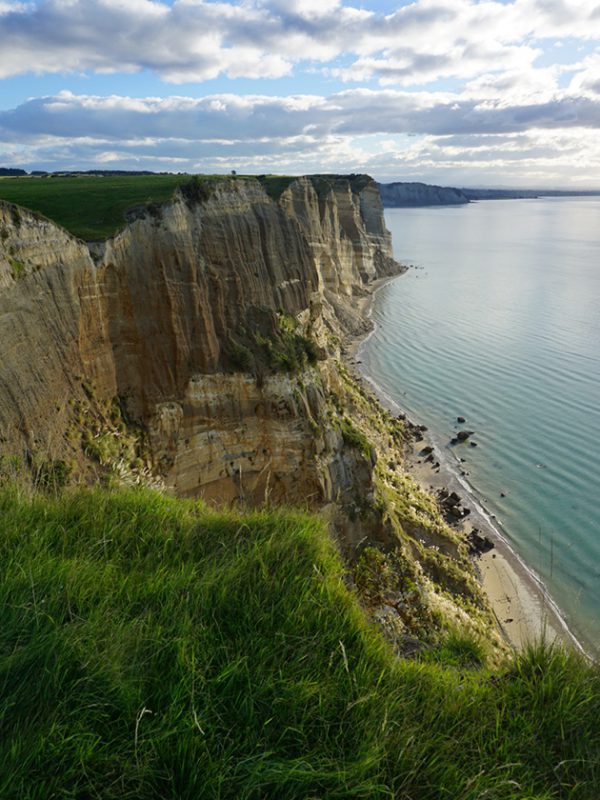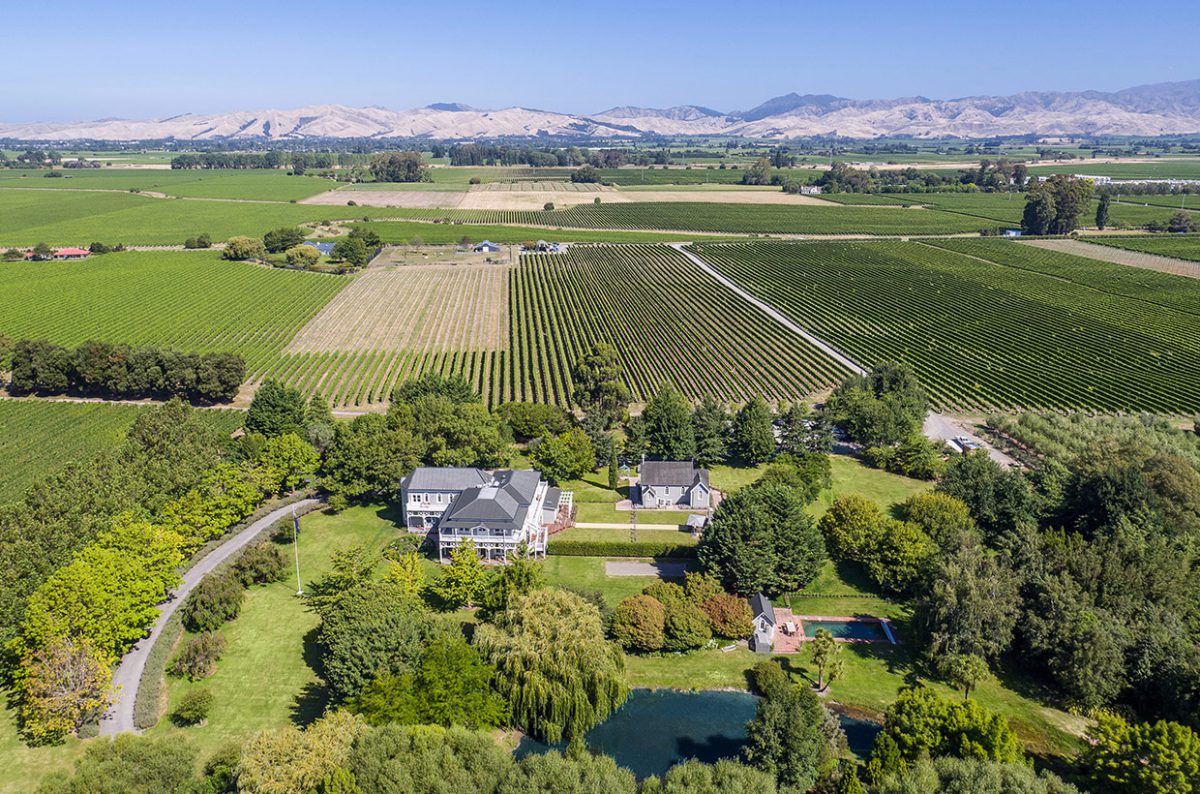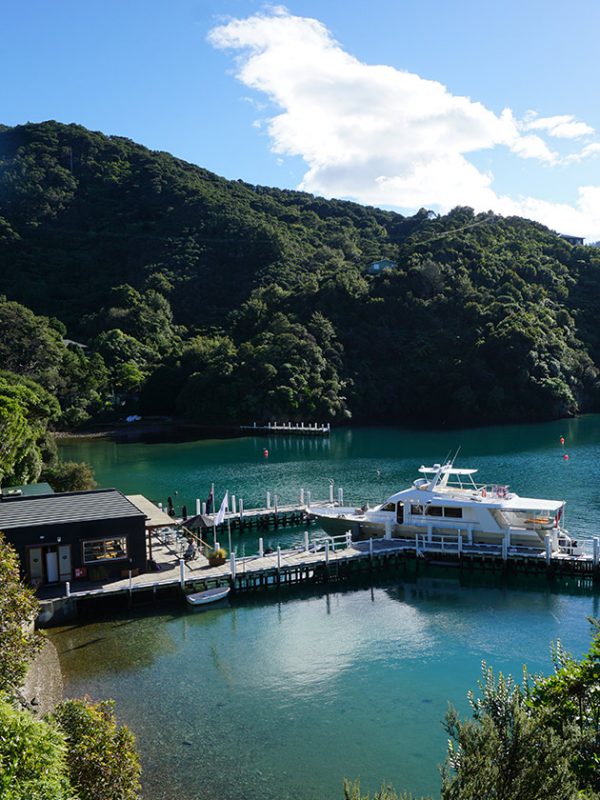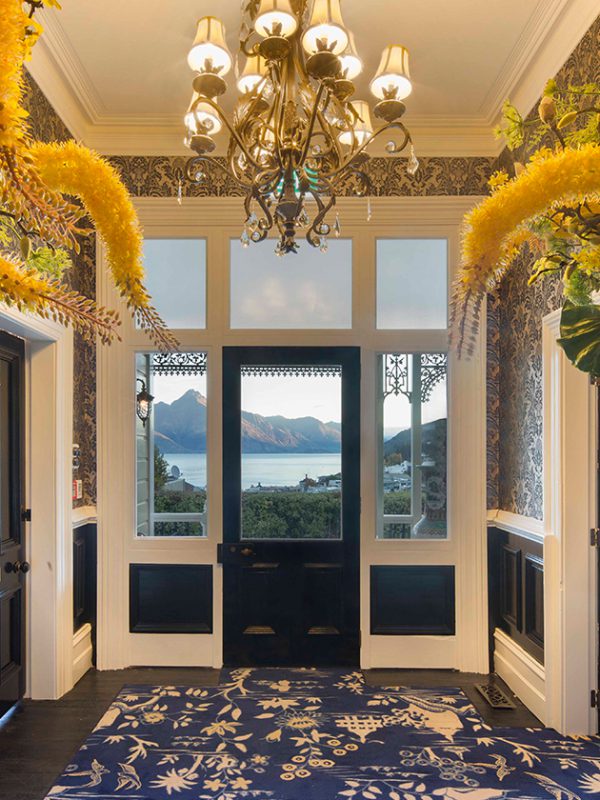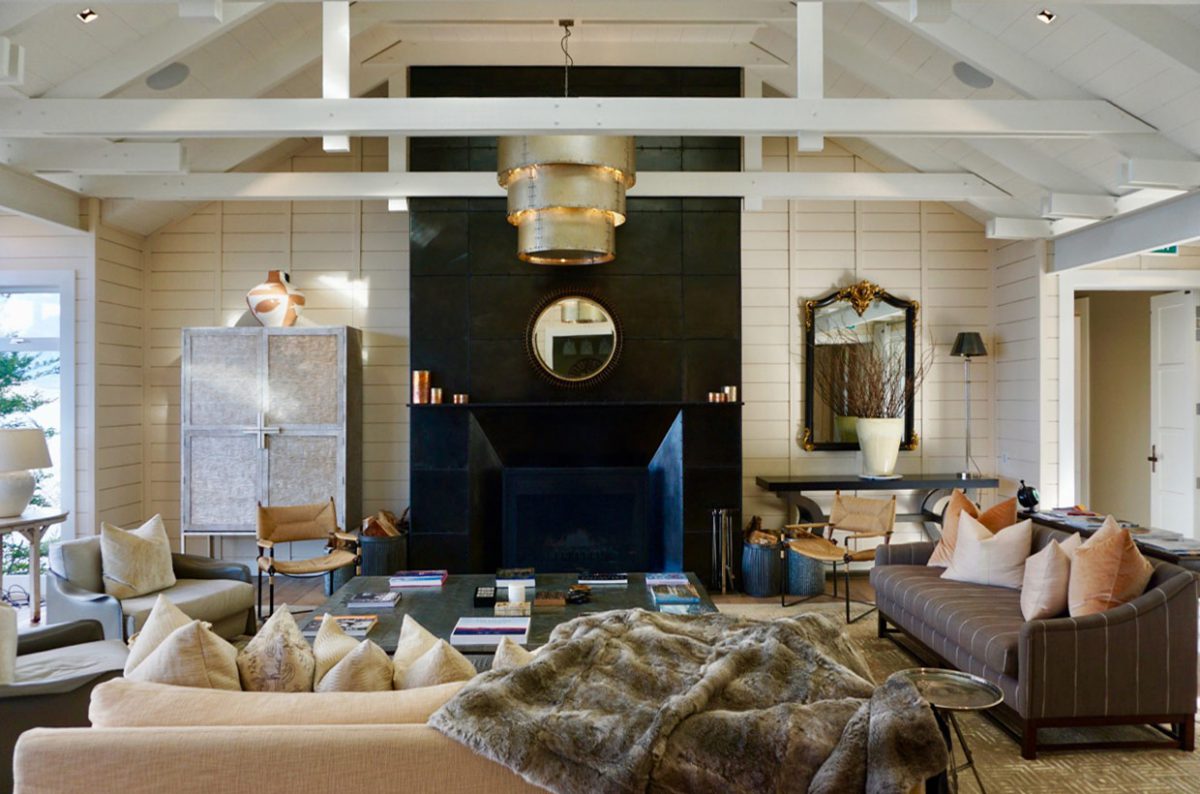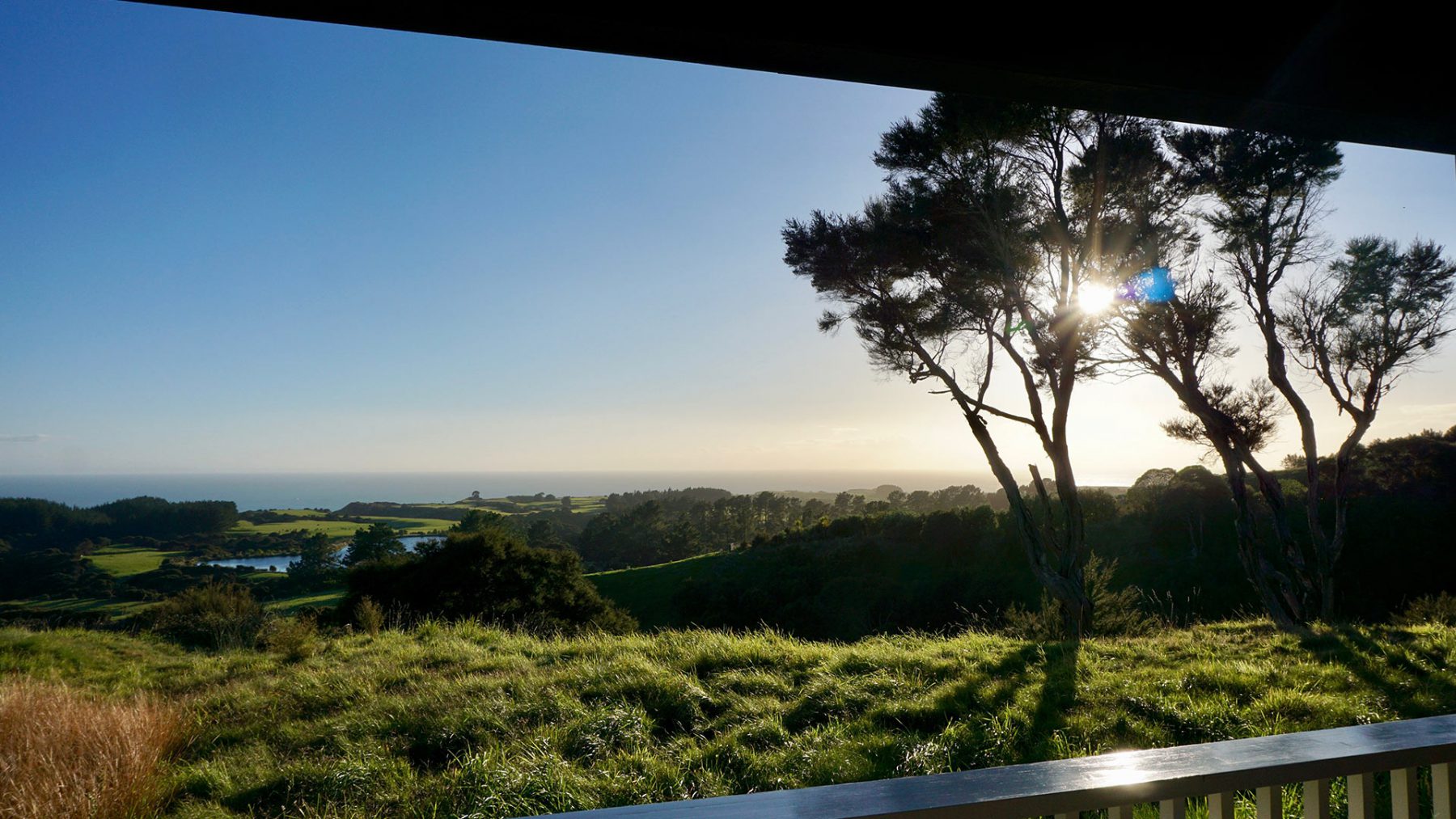Destination NZ by Eva Müller-May | 1st September, 2017 | Personalities
Some trips are like winning the lottery: how about going to New Zealand and spending almost every night in a different exclusive lodge? To our writer, it was a no-brainer. She spent eleven incredible days in the “land of the long white cloud,” as the Maori call the island nation: marveling at the breathtaking natural scenery, sampling the world’s best coffees and meeting relaxed people in Victorian villas.
The news broke while I was sitting in a café in Wellington. After an assessment carried out by Deutsche Bank, the relatively small capital of New Zealand had been officially declared the city with the best quality of life – ahead of Edinburgh, Zurich and Melbourne. Suddenly, my perfect flat white seemed even tastier. There are 17 coffee roasteries in Wellington alone. This is because New Zealanders – like Italians back in Europe – are crazy about great coffee. Wellington’s restaurants are amazing, as well, and like almost anywhere in the country, serve local, seasonal fare: freshly caught fish, tender lamb and Angus or Galloway beef. One of the capital’s nicknames is “Wellywood” – a nod to Hollywood. Indeed, New Zealand’s movie industry is booming: The Hobbit, The Lord of the Rings and Avatar were all produced here. Wellington is also known as the “Windy City,” as there is a strong, continuous breeze from the south that clears your head and sharpens your thinking. I had arrived in the city by propeller plane, halfway through a unique trip that consisted of visiting nine luxury lodges in eleven days – starting at the tip of North Island and going all the way down to Queenstown on South Island. My first insight: there are hardly any traffic jams in New Zealand. While the distances are by no means short – New Zealand has an area of 270,000 square kilometers, more than the U.K. – tackling shorter distances by car, and longer ones by “hopping across” on a small propeller plane, is an entirely relaxed affair. In general, the Kiwis, as New Zealanders refer to themselves, are totally laid back. No one I saw was in a hurry; there were friendly smiles all around. Even at airports people kept sitting down next to me to ask me how I was. Subsequent invitations to their homes were no rarity – out of sheer hospitality or in order to show me various things: a collection of pieces of jade, Maori works of art, old photographs or a recipe handed down from their grandmother. This tendency to strike up a conversation may be rooted in New Zealand being an island nation and the fact that it is home to only roughly 4.5 million inhabitants (who are outnumbered by 36 million sheep). For me as a Parisian who is used to anonymity, crowds and a hectic pace, this was a novel, very pleasant approach to life.
I had spent the first five days of my trip at two idyllic golfing spots on North Island: at The Lodge at Kauri Cliffs in subtropical Matauri Bay, in the extreme north of the island, and at Cape Kidnappers in Hawke’s Bay, on the temperate east coast. The landscape here is reminiscent of Provence, but also of Tuscany, the Ardèche, Schleswig-Holstein in Germany, the Caribbean and Scotland’s high plateaus. Flat in some places, hilly in others, it also features shallow river valleys, picturesque canyons, fine-grained sandy beaches and craggy cliffs. Add to that, vast grassy plains, Nikau palm trees, silver ferns and gorse shrubs. Unlike its southern neighbor, North Island has no deciduous trees. The Kauri Cliffs Lodge owes its name to a mighty, roughly 900-year old and almost 40-meter tall Kauri tree, a protected species in New Zealand. Architecturally, the building is a blend of East Hampton chic and South Carolina grandeur with some European antiques thrown in for good measure. Its front door gives onto the golf course, which has a 180-degree view of the ocean. The Cape Kidnappers lodge is located above the rugged cliffs of Hawke’s Bay, close to the small, charming art deco town of Napier. The lodge boasts high ceilings and a lot of wood and brickwork. Iron tractor seats hang on the walls like paintings. After a long day, why not relax in the drawing room, in the library or in the round lounge with its fluffy sheepskins scattered in front of the fireplace. Only the “loggia” – one of three dining rooms – is rather reminiscent of an elegant orangery in a small chateau in northern France. The second part of my journey started in the car. Phil, the driver, picked me up from the hotel and took me up the steep and winding roads to a 2,000-hectare farm in Palliser Bay. “This is where William, Kate and George relaxed after their long flight in 2014 and before starting their official visit to New Zealand,” said Phil. The Wharekauhau Country Estate is said to be among the top 20 resorts worldwide. Nestled into a mountain range and with its many turrets, it looks like a Tudor castle. Tom Cruise, the Rolling Stones and Bill Gates are among its past guests. Naturally, no one at the lodge talked about the illustrious visitors it had had. My cottage gave me an inkling of how they must have felt, though: the fireplace was roaring, the four-poster bed looked inviting. In the setting sun, the view of the Pacific from the patio and across the garden was absolutely stunning. Wrapped in a woolen blanket, I stayed up for a long time. The next morning, there was corned beef, potatoes and bacon for breakfast. We then set off in a jeep across the seemingly endless estate and I experienced sheep shearing for the first time. With its more than 7,000 sheep, the farm’s shearing season is never over.
After this, I left North Island, making the short hop down to Blenheim and the Marlborough Lodge by propellor plane. This elegant, wooden Victorian house with spacious verandas is set in a roughly seven-hectare estate in the middle of New Zealand’s most famous wine growing region. The vegetation seems less primal than on North Island, more manicured: rose beds, colorful deciduous trees, yellowish-red vines. The view made me realize – if I hadn’t before – that in New Zealand May isn’t the spring, it’s fall. The Marlborough Tour Company that owns the lodge of the same name also took me on a motorboat trip aboard a 20-meter Tarquin yacht. Captain Matt sailed me across the Queen Charlotte Sound to the remote Bay of Many Coves Resort for afternoon tea. The resort is only accessible by helicopter, seaplane or boat. Its eleven wooden cottages, which seem to hover alongside the naturally overgrown slope, offer total seclusion from the outside world – ideal for stressed-out urbanites. There was soothing birdsong thanks to bellbirds and tui. “Dolphins regularly visit the bay,” said Matt. On the way back, we approached one of the numerous fish farms, where I was invited to sample a smoked variety of New Zealand salmon, said to be the world’s best. The next morning, I left for Queenstown. The last two days still lay ahead, but my fascination with this country was to intensify even more. Hulbert House, a Victorian villa built in 1888 and totally renovated by a Japanese investor in 2016, has six guest rooms. The villa is located on the shores of 80-kilometer long, 400-meter deep Lake Wakatipu. Its interior design is retro and eclectic; its carpets feature Japanese motifs. The region is shielded from the chilly western winds by the Southern Alps. In the summertime, it is thus roughly two degrees warmer than on North Island. In winter, it has been known to snow here.
Queenstown used to have a reputation as the center of back-packing and adventure tourism; bungee jumping was invented nearby. Nowadays, an increasing number of high-end tourist lodges are opening up in and around the city. I met up with architect Michael Wyatt who showed me around this small, vibrant and very walkable town. Over the last 30 years, Wyatt has developed countless buildings in Queenstown. There is one in almost every street. His approach: don’t distort the character of the city, stick to two or three-story buildings made of local materials, and always give them special architectural features. He calls this “breaking the scale.” His masterpiece is the modern annex of the recently renovated, Neoclassical Eichardt’s Private Hotel. The annex pierces the lakeside promenade like the tip of a spear. Its ground floor houses a Louis Vuitton boutique, the upper floor contains office space and Eichardt’s Penthouse, which is decorated like a private apartment and can be rented for ten thousand dollars a night. On the morning of my last day, I was scheduled to take a helicopter ride across the fjords in the west of the island. Sadly, the trip was cancelled due to low stratus. So the Matakauri Lodge, roughly 10 minutes by car from Queenstown, was my last stop in this exciting country. Decorated in alpine chic, but with real Picassos on the walls, the lodge fits in well with its mountainous surroundings. Over lunch, the manager Emanuel Grosch, who is originally from Munich, told me a Maori tale about the warrior Matakauri, after whom the lodge is named. Matakauri freed his beloved from the clutches of a lake giant, killing the giant in the process. But buried deep in the lake, the giant’s heart is said to be still beating because the waters of the lake rise and fall by several centimeters in twelve-minute intervals. The set menu – a confit of Aoraki salmon, variations of Merino lamb and a yogurt and apple parfait with meringue – was Michelin star-worthy. It felt a bit like a meal for a condemned person, someone about to embark on 26 hours of air travel back to Paris. Time enough to take a decision. You’re in my heart, Aotearoa, land of the long white cloud – as New Zealand is called in Maori. I will be back!
